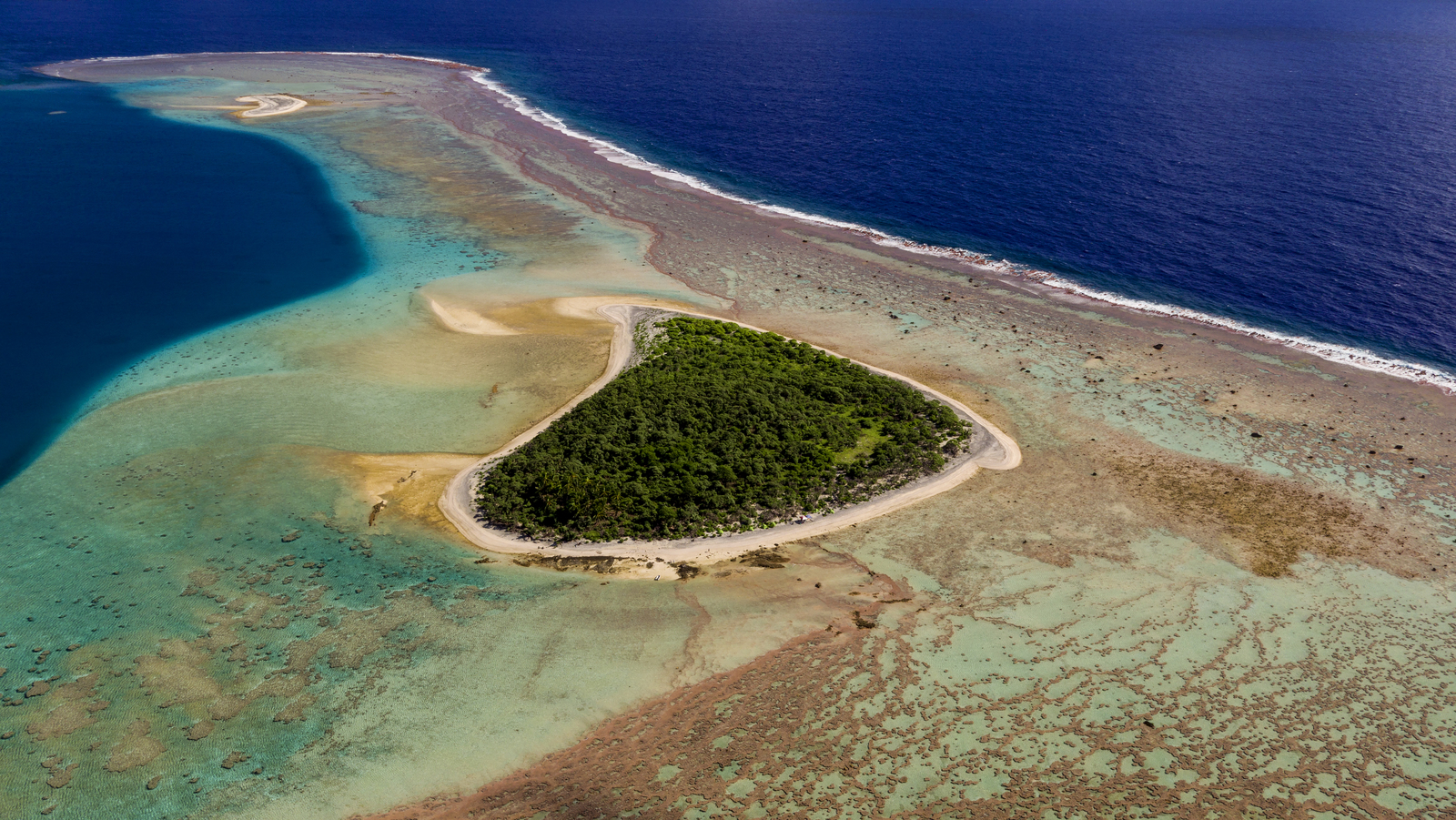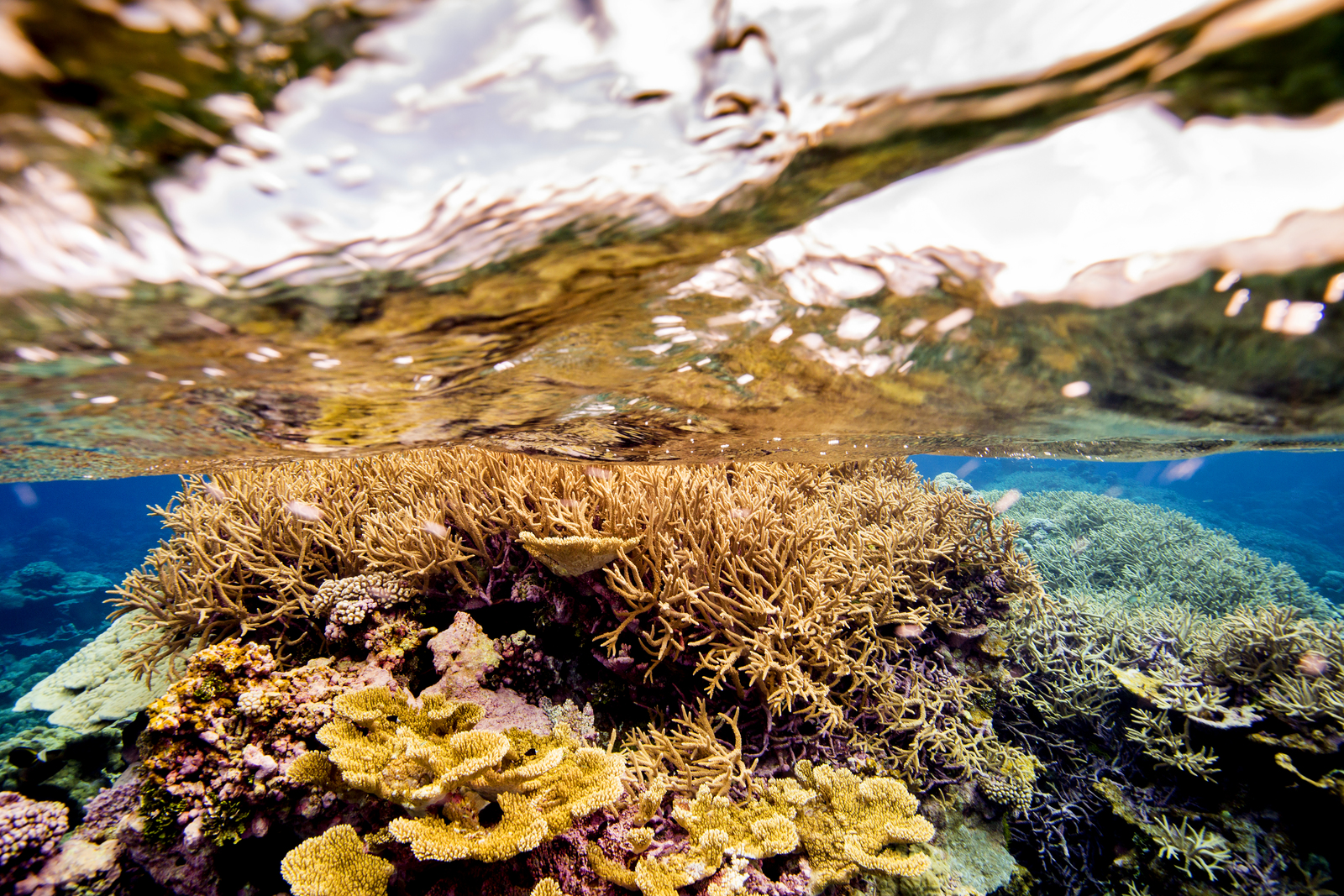Palmyra Atoll, part of Pacific Remote Islands Marine National Monument.
Journey to a faraway island wilderness lost in time…
On the far reaches of the Pacific Ocean, blue-green islands, atolls, and corals reefs are thriving with a dizzying array of wildlife and tropical beauty, largely untouched by humans and currently protected as marine national monuments. Premiering on Earth Day (April 22) 2019, Hidden Pacific will bring to viewers never-before-seen footage of these remarkable places, sharing the splendor of such pristine environments and their important role in safeguarding our planet.
Pacific Remote Islands Marine National Monument
Pacific Remote Islands Marine National Monument was established in January 2009 and expanded in 2014. It is located to the south and west of Hawaii and consists of Wake, Baker, Howland, and Jarvis islands, Johnston Atoll, Kingman Reef, and Palmyra Atoll. The Pacific Remote Islands Marine National Monument is the largest marine protected area in the world and an important part of the most widespread collection of marine life on the planet under a single country's jurisdiction. Both Palmyra and Wake atolls are prominently featured in the film.
Papahānaumokuākea Marine National Monument
Papahānaumokuākea Marine National Monument was established in June 2006 and expanded in 2016. It is comprised of several previously existing federal conservation areas including the Northwestern Hawaiian Island (NWHI) Coral Reef Ecosystem Reserve, Midway Atoll National Wildlife Refuge, Hawaiian Islands National Wildlife Refuge, Northwestern Hawaiian Islands Marine Refuge, State Seabird Sanctuary at Kure Atoll, and the Battle of Midway National Memorial. On July 30, 2010, Papahānaumokuākea was designated as a World Heritage Site, further demonstrating the commitment of the United States and the state of Hawaii to conserve this important place.
Rose Atoll Marine National Monument
Rose Atoll Marine National Monument was established in 2009. It is approximately 130 nautical miles east-southeast of American Samoa. It is the easternmost Samoan island and the southernmost point of the United States.
Directed by award-winning filmmaker, photographer, and conservationist Ian Shive, Hidden Pacific is a pioneering film profiling the Pacific Ocean’s protected and remote national wildlife refuge islands and marine national monuments.
Hidden Pacific features Palmyra Atoll, within the Pacific Remote Islands Marine National Monument, Midway Atoll, part of Papahānaumokuākea Marine National Monument, recently expanded by President Barack Obama in 2016, and Rose Atoll Marine National Monument, in America Samoa.
The film’s breathtaking footage of these faraway islands will leave audiences with a deep-felt appreciation for these extraordinary places and the beauty of nature left untouched by civilization. The storied histories of these atolls — from the WWII Pacific Theater to their present environmental recovery and ecological research initiatives — provide the platform from which the film explores a diversity of science and human-interest stories.
Hidden Pacific was produced in cooperation with the U.S. Fish & Wildlife Service and affiliated organizations, which provided the filmmakers with unprecedented access to the bio-secure zones of the marine national monuments. Premiering in 2019, Hidden Pacific will be distributed to museum, zoo, aquarium, giant screen, and IMAX® cinemas, in all theatrical formats, around the world.
Hidden Pacific seeks to educate the public about the critical role these marine monuments play in the face of environmental threats such as climate change, global warming, rising sea levels, ocean acidification, overfishing, and plastics pollution. Political forces aim to dismantle marine national monument protection and could forever alter the delicate balance of these pristine marine ecosystems and the overall health of the planet.
Partnering with some of the leading environmental advocacy groups in the United States, Hidden Pacific will play a major role in educating the public, supporting conservation efforts, and providing exclusive visual content for media coverage. The places featured in Hidden Pacific won’t be protected until the public sees the beauty, understands the significance, and gets motivated by this remarkable story.





